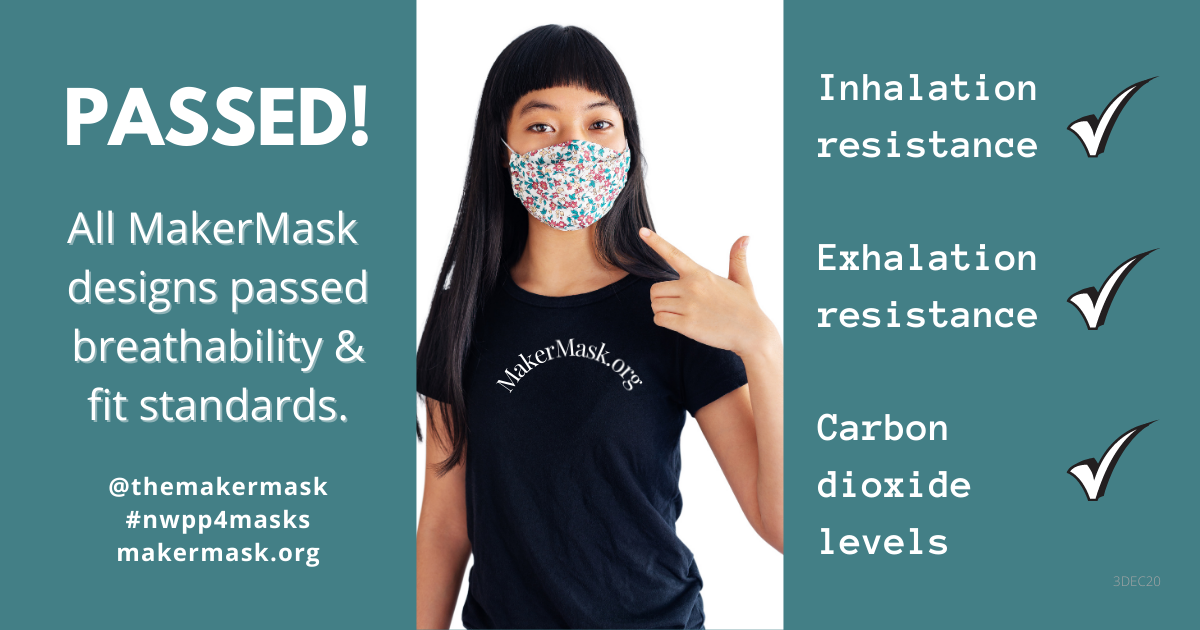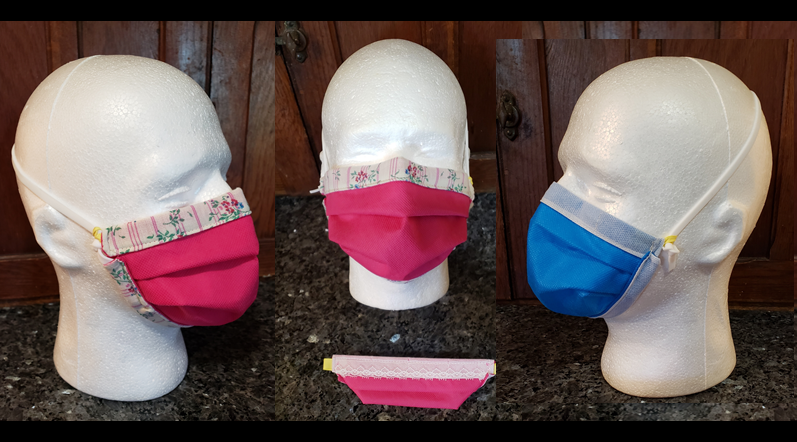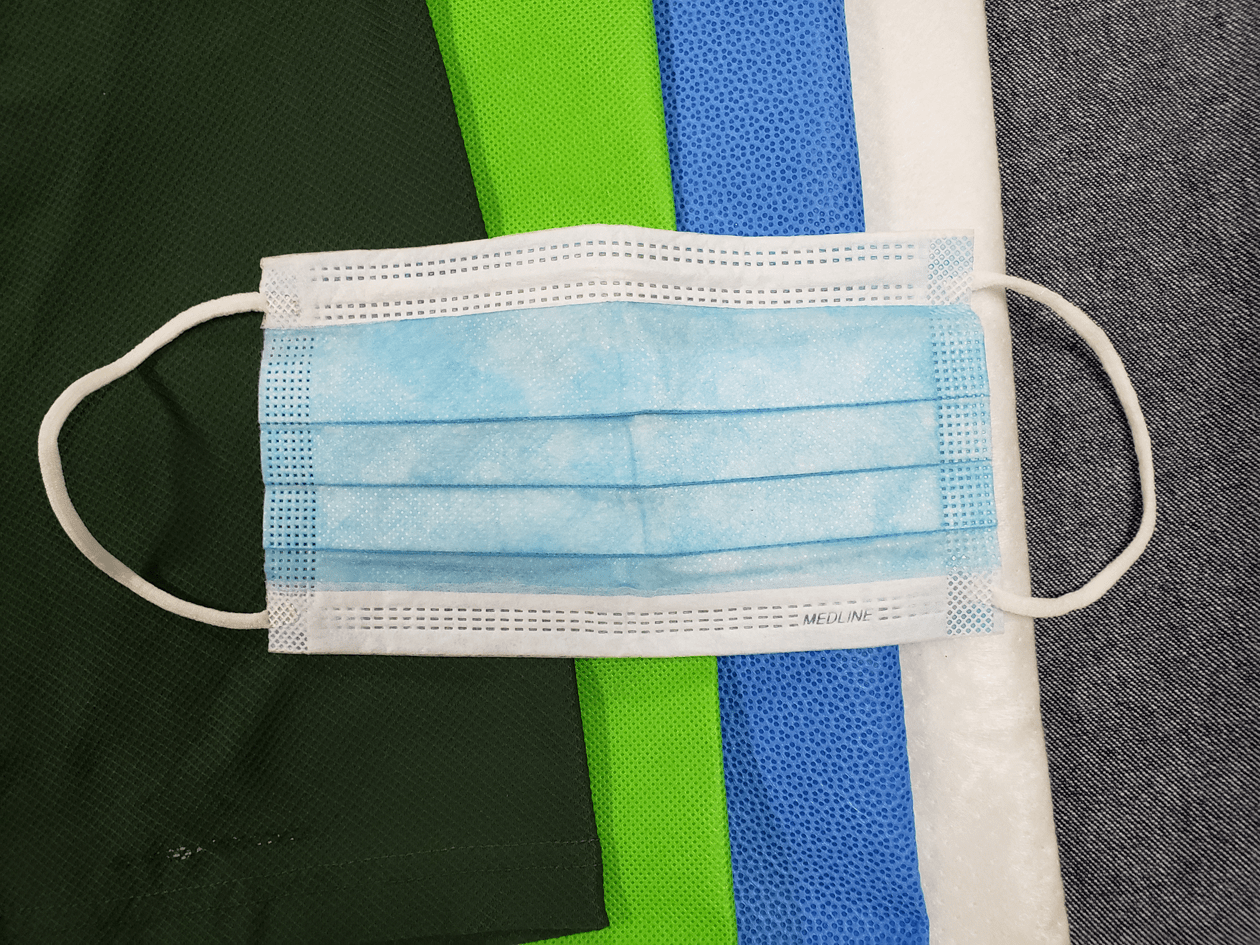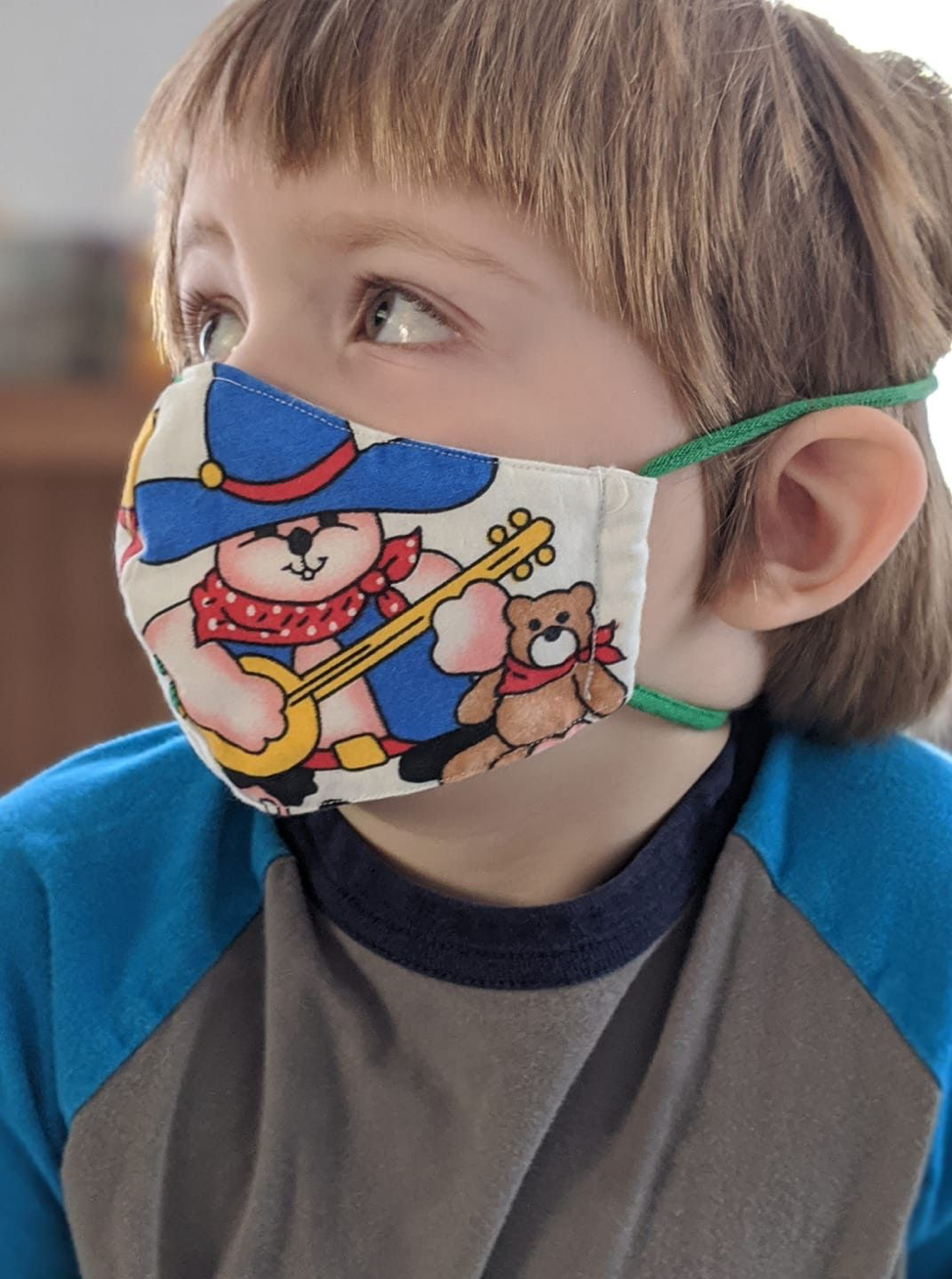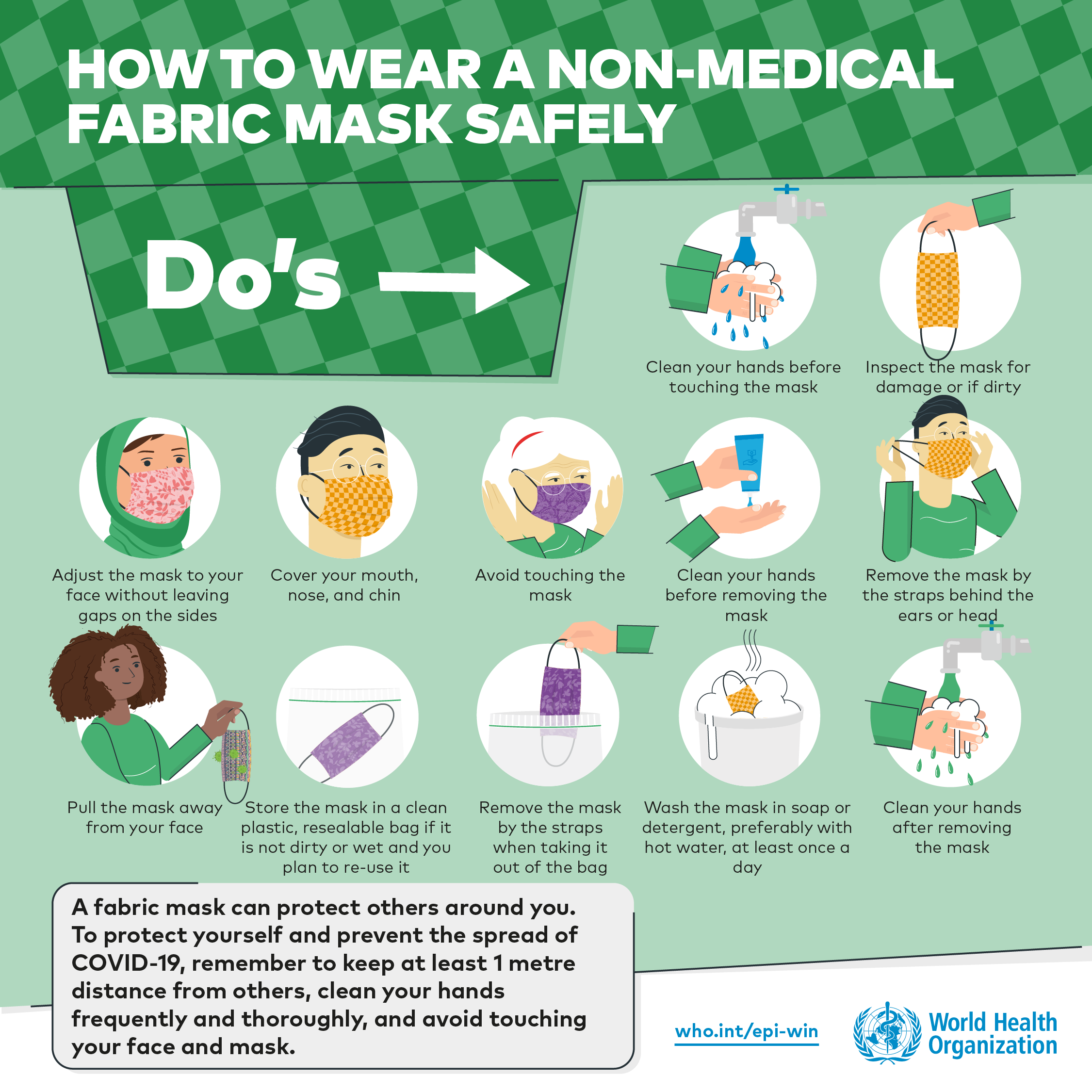Key result: Quantitative testing shows that fabric masks constructed from spunbond nonwoven polypropylene (NWPP) and/or quilting cotton are breathable and can satisfy NIOSH criteria for breathability. Ready for more testing? Visit our MakerMask Lab Testing Campaign for details. Introduction: Breathable Masks Breathing isn’t optional, and as COVID continues and mask wearing becomes commonplace, we are […]
Adopting WHO Guidance on Fabric Masks for COVID-19
This paper describes key differences between the WHO and the CDC fabric mask guidelines, including the rationale for the inclusion of hydrophobic polypropylene materials in the WHO guidance, and was initially shared on the SSRN Preprint Server on June 26, 2020. [Update: December 2020)] The WHO updated their guidance on Fabric Masks December 1, 2020. […]
Mask Fabrics: Introduction to Fibers and Fabrics
How Do I Choose Fabrics for Masks for COVID-19? Since March, it seems like there has been a constant barrage of conflicting information about which fabrics are the best for masks for COVID-19. We’ve put together this crash course on mask fabrics to provide some of the fundamental concepts in fabrics and how they are relevant for our collective mask making efforts.
3 Easy DIY Mask Tests
In an ideal world, the safety and efficacy of all of the fabrics and materials used in handmade masks for COVID-19 would be tested using the same standards and facilities used by researchers and large manufacturers. Unfortunately, very few people have access to these resources. In this post we provide instructions for three easy DIY […]
Masks for the Blind During the COVID-19 Pandemic
In this post, we hear from Matt White, who shares with use some of his experience and observations about masks for the blind. This is part of a series of guest blog posts where we get a chance to hear voices and perspectives about making masks more accessible. With government agencies around the country and […]
Masks for Children During the COVID-19 Pandemic
In this post Hope Metzler discusses masks for children including: six considerations for making and/or buying masks for children, information about when children should and should not wear masks, and an in depth look at the alternatives to masks for infants. This is part of a series of guest blog posts where we get a […]
WHO Guidance on Face Masks Changes
Surprising New Guidance from the WHO The WHO guidance on face masks for COVID-19 has changed to include the recommendation that the general public use fabric masks in public settings where physical distancing can’t be achieved and provides specific guidance on mask layers and materials. According to the World Health Organization (WHO), the ideal fabric […]
Fabric Face Masks: Cleaning and Disinfection
Reusable fabric masks should be cleaned and/or disinfected before each use to reduce risks associated with COVID-19 AND other potentially infectious microorganisms (e.g. bacteria, viruses, and fungi). Although the general principles of mask cleaning and disinfection are the same for most fabric masks, details will vary depending on specific mask designs, features, and materials. These […]
Label Me A Face Mask: FDA Labeling Requirements
Almost everything comes with a label, from food to clothing to medicine to medical devices, and according to the FDA, face masks and cloth face coverings should come with labels too. More specifically, the Emergency Use Authorization for Face Masks released by the FDA April 24, 2020, includes labeling requirements for masks that are being […]
The Big Four: Criteria for Fabric Mask Materials for COVID
This deep dive post looks into the “Big Four” criteria evaluated in preliminary assessments of community mask materials: material characteristics, breathability, water-repellence, and disinfection options. More specifically, we focus on nonwoven polypropylene (NWPP), which is commonly used in commercial face masks. Although ideal medical grade NWPP is not currently available for community use, NWPP is commonly available at different weights and grades for other household and/or commercial purposes, such as reusable grocery bags. Here we take a more in-depth look at the 4 preliminary criteria considered when evaluating potential sources of NWPP.


